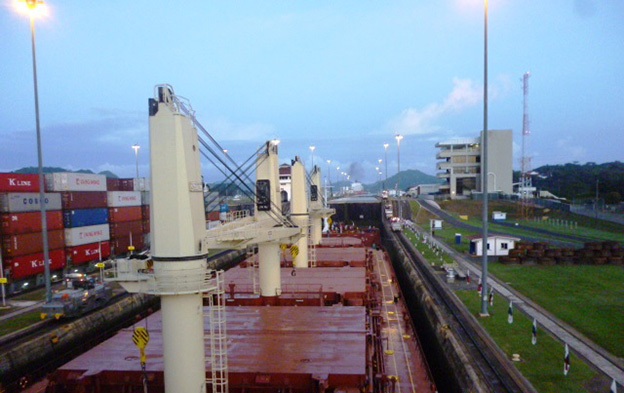 Ships recently designed and built in China and built to BV class point the way towards Chinese solutions to the needs of shipowners to reduce air emissions and improve energy efficiency.
Ships recently designed and built in China and built to BV class point the way towards Chinese solutions to the needs of shipowners to reduce air emissions and improve energy efficiency.
The first three of the Dragon series of eight 27,500 cu m multi gas carriers have been delivered by SinoPacific Group to Denmark’s Evergas. These ships accommodate today’s largest pressurized and refrigerated Type C cargo tanks which are capable of cryogenic performance down to -163°C for the carriage of LNG. The propulsion system features tri-fuel engines from Wärtsilä which can run on both methane and ethane, a world first.
The four-stroke 50DF engines have been successfully tested after risk analysis, approval in principal and final design assessment by Bureau Veritas. This concept is now providing a flexible solution to achieving the IMO Tier III regulations with methane or ethane fuels without the need for an exhaust gas treatment or recirculation system.
Even prior to the challenging implementation date of 1st January 2016 set by the IMO for moving to Tier III, the first two of a series of four 15,000 dwt chemical tankers classed by Bureau Veritas have been keel-laid by Avic Dingheng Shipbuilding for Danish shipowner Terntank.
These chemical tankers are specially designed for operation in the stringently controlled air quality areas of North America and Baltic seas. The propulsion system of these vessels is the first designed to achieve the Tier III regulations while running on LNG in Otto cycle with low speed dual-fuel engines providing the advantage of the reliability of a low pressure fuel supply system while keeping the fuel consumption performance of a two-stroke engine.
When compared to a similar capacity tanker delivered ten years ago Terntank expects 99 per cent SOx, 97 per cent NOx and 40 per cent CO2 emission reduction at the same 14 knots speed. These ships will also be equipped with ship-to-ship LNG bunker transfer facilities.
In the LNG offshore sector the first FLNG ever built is classed by Bureau Veritas and nears completion at Wison Shipyard for Exmar. The on-board liquefaction and regasification facilities enable flexible LNG exporting solutions for remote areas where the construction of shore-based gas terminals would not be a practical solution. While the first unit adopted the Type C cargo tank technology, the second unit, for which keel has been laid this year, will adopt the SPB cargo containment system.
And finally, as the industry moves resolutely to gas emissions reduction and energy efficiency choices, Bureau Veritas China has launched a local HydrOcean Business Unit to deliver local services in China and North Asia Zone using Computational Fluid Dynamics (CFD) tools for fuel consumption reduction and energy efficiency, effectively allowing unlimited hydrodynamic design optimisation.
 Ελληνικα
Ελληνικα